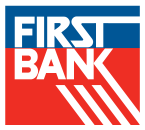If you’re just getting started or have decided it’s time to start building up your short or longer-term savings, you may be wondering if a traditional savings account, a high-yield savings account, or a Certificate of Deposit (CD) is the right solution for you.
Developing a strategy for your savings can be as simple as allocating your funds into separate “buckets,” or categories. For instance, if you are putting money aside for shorter-term needs, such as a new set of tires or a summer vacation, you may want to put your money into a traditional savings account. If you are saving for longer-term expenses, such as a dream wedding or new home down payment, you would want to consider a high-yield savings account or CD that is designed to grow your money over a longer, or set, period of time.
Although there are pros to each type of savings method, determining your goal(s) and the timeframe for using those funds, are an important first step.
Let’s take a closer look at three popular, non-retirement savings options:
Traditional Savings Account
Traditional savings accounts are secure places to hold your funds and will incrementally grow as you continue to make regular deposits. After a checking account, having a traditional savings account is an important element of building a secure financial future.Before opening a traditional savings account, however, always verify the bank or financial institution is FDIC-insured, offers a competitive interest rate, and provides a variety of ways in which to access your funds.
Find out more about opening a traditional savings account from First Bank.
High-Yield Savings Account
A high-yield savings account is designed to give depositors a higher interest rate on their funds than a traditional savings account. Depositing your money into a high-yield savings account gives you both the security and flexibility of a traditional savings account, but the benefit of earning a higher rate.What should you consider when opening a high-yield savings account?
- Determine what the Annual Percentage Yield (APY), or the percentage that reflects the amount of interest earned in one year taking compounding interest into account, is and compare it to that of your traditional savings APY.
- Verify that the high-yield savings account is FDIC insured.
- Know the ways in which you may access your funds.
Find out more about a consumer high-yield savings account from First Bank—it’s the best high-yield savings account we have to offer!
CD
A Certificate of Deposit, or CD, is a type of savings account offered by financial institutions.Part of the agreement of opening a CD is that you will keep an established amount of money in it for a specified period of time and, in exchange, you benefit from locking in a higher interest rate. Often, you’ll find more favorable CD rates versus traditional savings accounts; however, per the specific CD agreement, withdrawing money early before the CD’s maturity date will often result in paying a penalty.
Find out more about First Bank’s CD promotions.
Regardless of which type of solution you choose, the important thing is to start saving today. With each paycheck, set funds aside for a specific savings goal, build up an emergency savings fund, and start building wealth for the future.


